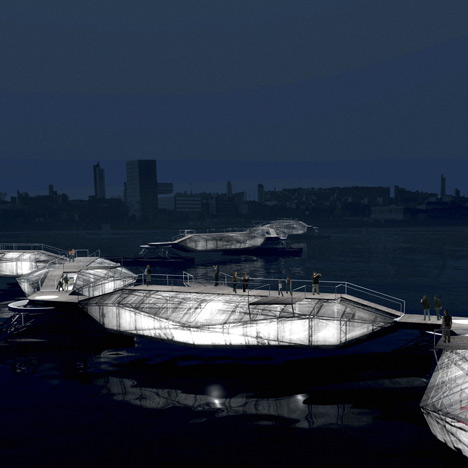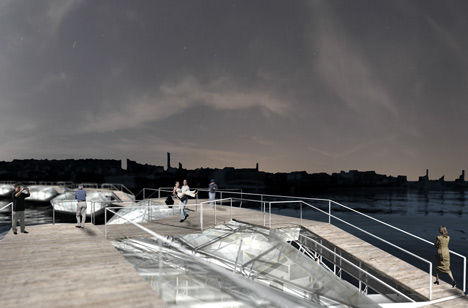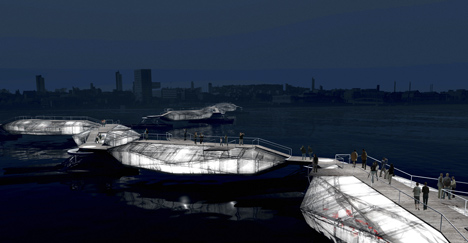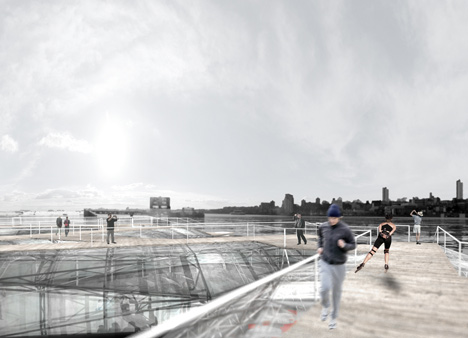

High Tide Street would connect the towns of Woolwich on the north bank and Silvertown on the south bank, and become a shared public space consisting of a concert hall, library, fish market and oyster bar.

The islands would be connected on flexible hinges and could be reconfigured.
Floating delicately between the physical and cultural boundaries of Silvertown and Woolwich, a new inhabitable bridge generates ephemeral connections and constantly shifting spatial configurations, governed by the rhythmic ebb and flow of the Thames.

The programme proposes for a new cultural ‘high street’ for Silvertown/ Woolwich/ London, including a Thames Oyster bar, a floating library, a concert hall and fish market, all continuously shifting with the tide. New connections are made with the river both locally and for the whole of London.

Londoners can begin to re-territorialise the once vibrant artery of the city in this vacillating new cultural hub for London.

My project began with an intensive programme of time-lapse film studies, historical research and investigative interventions into the broken connections between both the North and South banks of the Thames at Silvertown/ Woolwich and more generally between London and the Thames. As the interventions developed, the brief set up a series of questions: how could the Thames be reoccupied and reconnected with London, using the contrapuntal dynamics of the ebb and flow of the tide as a generator for new, unusual spatial configurations and connections with London’s main artery?


